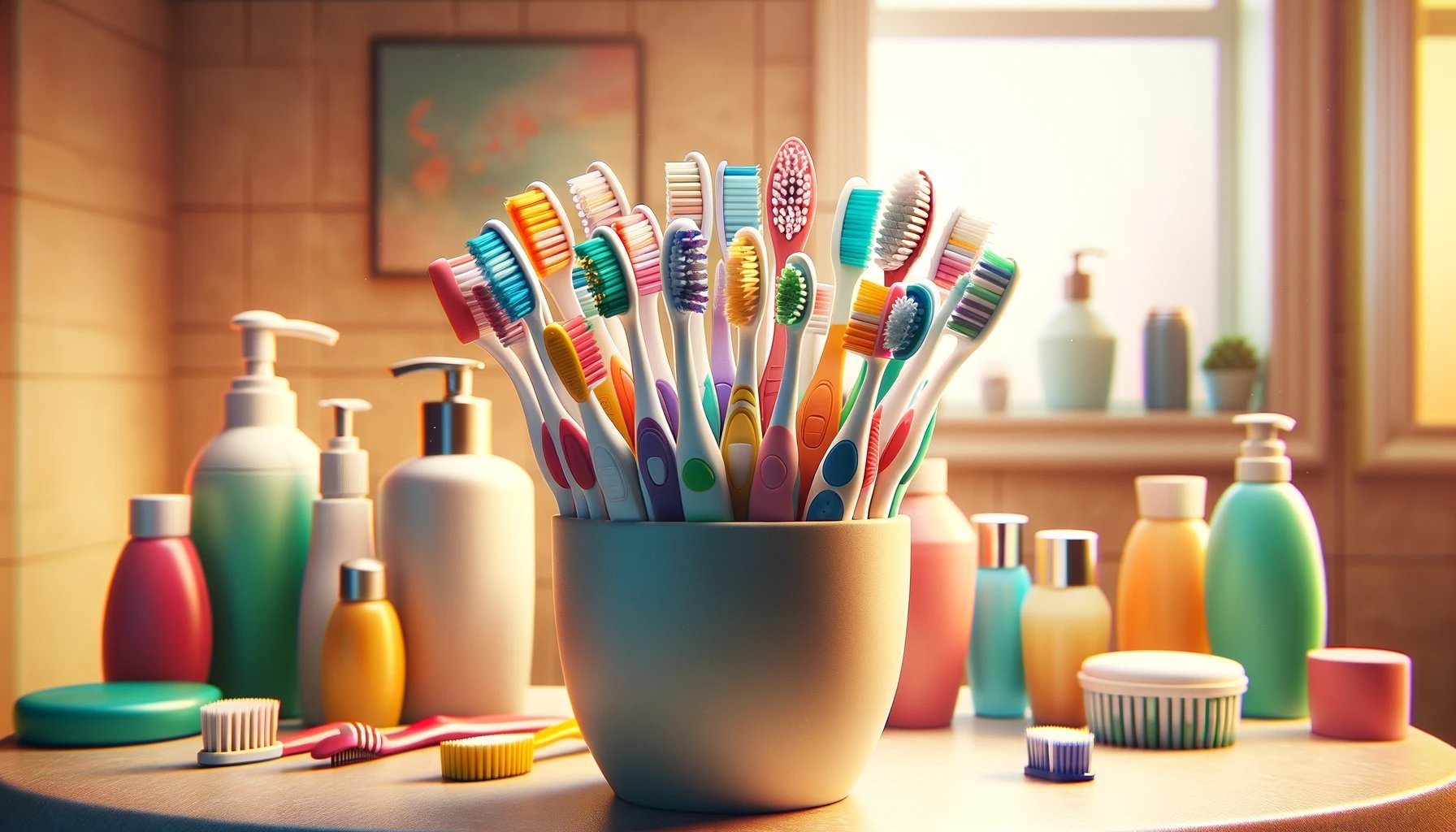Gap teeth, also known as diastema, are a common dental characteristic that affects individuals from all walks of life. While some may view it as a unique and appealing feature, others may feel self-conscious or frustrated by the gap between their teeth. It’s important to recognize that individuals with gap teeth possess a diverse range of characteristics beyond their dental appearance. In this article, we delve into the various aspects of these individuals’ lives, exploring the potential impacts on oral health, aesthetic considerations, and the emotions that may arise from having gap teeth. Join us on this journey of understanding and appreciation for the unique characteristics of people with gap teeth.
Key Takeaways:
- Gap teeth, also known as diastema, are considered a sign of beauty, strength, and good luck in several cultures, particularly in countries like Nigeria, Ghana, and Namibia.
- According to astrology, having a gap between the front teeth is believed to bring immense fortune, and closing the gap may hinder prosperity.
- Gap teeth can vary in size and prominence, with some gaps being unnoticeable and others more prominent.
- Gapped teeth may affect speech and cause a lisp, as air can escape when making certain sounds.
- In some African countries, a gap in women’s teeth is seen as a symbol of beauty and fertility.
- People with gap teeth may have unique experiences, such as dealing with food getting stuck in the gap or entertaining themselves by shooting water out of it.
- Diastema can occur when a person’s teeth are too small for the jawbone, causing them to be spaced too far apart.
- Gapped teeth can lead to self-consciousness and embarrassment, especially if the gap is large and noticeable.
- Treatment options, like braces and Invisalign, are available for closing the gap between teeth, primarily for cosmetic reasons.
- The most common type of diastema is between the two front teeth, known as the midline diastema.
What are characteristics of the people with gap teeth?

As an experienced dental hygienist, I have encountered people from all walks of life, including those with gap teeth. Gap teeth, or diastema, can vary in size and prominence from person to person. In some cultures, diastema is even considered a sign of beauty and good luck.
Natural Beauty and Cultural Significance
Gap teeth are viewed differently across cultures. In countries like Nigeria, Ghana, and Namibia, having a gap between the teeth is considered desirable and is associated with beauty and fertility. It is seen as a unique characteristic that enhances a person’s attractiveness. In fact, in these cultures, some individuals even choose to create artificial gaps between their teeth for aesthetic purposes.
Speech and Whistling
While diastema has cultural significance, it can also come with unique challenges. Larger gaps between the teeth can affect speech and pronunciation. Air may escape through the gap when certain sounds are made, resulting in a whistling sound or a slight lisp. However, it’s important to note that not everyone with a gap between their teeth will experience these speech-related concerns.
Unique Experiences and Self-Consciousness
People with gap teeth often have unique experiences. They may find that certain foods get stuck between their teeth more easily, requiring extra care when eating. Some individuals even entertain themselves by shooting water or small objects through the gap. These experiences add to the diverse range of emotions that individuals with gap teeth may encounter.
However, it is worth mentioning that larger and more noticeable gaps can lead to self-consciousness and embarrassment in some individuals. This is especially true if the person feels that their appearance is negatively affected by the gap. In such cases, seeking treatment options to close the gap may be considered.
Treatment Options and Cosmetic Considerations
Various treatment options are available for closing the gap between teeth, although they are primarily considered cosmetic. Orthodontic treatments such as braces or Invisalign can gradually shift the teeth to eliminate the gap. These treatments are often chosen by individuals who feel that closing the gap will improve their self-esteem and overall appearance.
It’s important to remember that the decision to seek treatment for diastema is a personal one. Some individuals embrace their gap teeth as a unique characteristic, while others may choose to explore treatment options for cosmetic reasons.
In conclusion, people with gap teeth possess a unique characteristic that can be viewed as a sign of beauty and good luck in certain cultures. While gap teeth can come with challenges such as speech differences and potential self-consciousness, it’s essential to respect and celebrate the diverse characteristics that make each person unique.
Ladies with gap teeth have their own unique charm and beauty. Want to know some interesting facts about them? Click here to discover fascinating insights about ladies with gap teeth: facts about ladies with gap teeth
Curious about what it means when a woman has a gap between her teeth? Uncover the hidden meaning behind this dental feature by clicking here: What does it mean when a woman has a gap between her teeth?
Are people with gap teeth attractive? Find out the answer and explore the attractiveness that lies in these distinctive smiles by clicking here: Are people with gap teeth attractive?
Oral Health Considerations for Individuals with Gap Teeth
Key Takeaways:
– Poor oral health can be a sign of social inequality, particularly for individuals with low income, lack of insurance, and belonging to racial/ethnic minority, immigrant, or rural populations.
– Access to quality oral healthcare remains a challenge for many, leading to oral health disparities.
– Neglecting oral health can have significant impacts on overall health and quality of life, affecting eating, speaking, smiling, emotional expression, self-esteem, school performance, and work attendance.
– Common oral health conditions, such as tooth decay, gum disease, and tooth loss, are largely preventable and can be treated early with proper dental care.
When considering oral health, it is important to recognize that individuals with gap teeth may face unique challenges and considerations. Gap teeth, known as diastema, are variations in tooth spacing that can vary in size and prominence from person to person. While diastema is sometimes considered a sign of beauty and fertility in certain cultures, it can also impact oral health in various ways.
1. Speech and Pronunciation
Gap teeth can affect speech and pronunciation, causing a whistling sound or a slight lisp. The gaps between the teeth can disrupt the airflow during speech, leading to these speech characteristics. Individuals with gap teeth may need to adapt their speech patterns to overcome these challenges.
2. Food Impaction
People with gap teeth may experience food getting stuck between their teeth more easily. The larger and more noticeable the gaps, the higher the likelihood of food impaction. This can lead to discomfort, bad breath, and an increased risk of dental problems such as tooth decay and gum disease.
3. Emotional Impact
Individuals with larger and more noticeable gaps in their teeth may experience self-consciousness and embarrassment. The appearance of their teeth can significantly impact their self-esteem and how they feel about their overall appearance. It is essential to consider the emotional well-being of individuals with gap teeth and provide them with appropriate support and understanding.
4. Treatment Options
Treatment options for closing the gap between teeth include orthodontic treatments like braces or Invisalign. These methods gradually shift the teeth into their desired positions. However, it is important to note that the decision to seek treatment for diastema is a personal one. Some individuals embrace their gap teeth as a unique characteristic and do not feel the need for corrective measures. It is crucial to respect individual choices and preferences when it comes to dental treatment.
Maintaining Oral Health with Gap Teeth
Regardless of whether an individual seeks treatment for their gap teeth or embraces them, maintaining good oral health is crucial. Here are some oral health considerations for individuals with gap teeth:
- Regular Dental Check-ups: Regular visits to the dentist are essential for preventive care, early detection, and treatment of any oral health issues.
- Proper Oral Hygiene: Brushing teeth twice a day with fluoride toothpaste, flossing daily, and using an antibacterial mouthwash can help remove plaque and food debris, reducing the risk of tooth decay and gum disease.
- Dietary Choices: Choosing a balanced diet and minimizing the consumption of sugary and acidic foods and drinks can help prevent tooth decay.
- Awareness of Signs and Symptoms: Individuals with gap teeth should be aware of any signs or symptoms of oral health problems such as tooth sensitivity, pain, swelling, or bleeding gums. Seeking prompt dental care can prevent the progression of oral health conditions.
- Communication with Dental Professionals: Openly discussing concerns related to oral health and personal preferences with dental professionals can help tailor dental care to individual needs.
Individuals with gap teeth deserve access to high-quality dental care that addresses their specific oral health needs. By considering the unique characteristics and challenges faced by individuals with gap teeth, we can ensure that oral health care is comprehensive, compassionate, and responsive to the diverse needs of patients.
Sources:
– Oral Health Disparities: A Perspective on Social Determinants
– Oral Health: A Window to Your Overall Health
Emotional and Social Impacts of Having Gap Teeth
Having a gap between teeth, known as diastema, can have various emotional and social impacts on individuals. This dental imperfection can significantly affect a person’s self-esteem and confidence, leading to feelings of self-consciousness and shame. The appearance of one’s teeth greatly influences how they perceive themselves and how others perceive them, which can have implications on various aspects of life, including social interactions, work, and overall well-being.
The emotional impact of having gap teeth can manifest in different ways. Individuals with gap teeth may experience social anxiety and a reluctance to smile confidently. They might feel embarrassed or uncomfortable in social situations, and this can lead to a tendency to avoid certain activities or gatherings. These emotions can significantly impact an individual’s quality of life and self-image.
The social impacts of having gap teeth can also be quite profound. Society tends to place a high value on physical appearance, including dental aesthetics. People with gap teeth may face judgment or negative stereotypes based on their dental characteristics. This can lead to reduced social acceptance, discrimination, and even bullying.
Additionally, individuals with gap teeth may encounter difficulties in their professional lives. The appearance of one’s teeth can influence how they are perceived in the workplace and can contribute to an individual’s social status and socioeconomic position. Negative perceptions of dental aesthetics can hinder career advancement and opportunities.
It is important to note that the emotional and social impacts of having gap teeth can vary from person to person. Some individuals may embrace their gap teeth as a unique characteristic and feel confident and comfortable with it. However, for those who do feel affected by their dental imperfection, seeking treatment options can help address these emotional and social concerns.
Overall, the emotional and social impacts of having gap teeth highlight the significance of dental aesthetics in our society. Understanding and addressing these impacts can enhance the well-being and confidence of individuals with gap teeth, allowing them to navigate social interactions and professional settings with ease.
Key Takeaways:
- Having a gap between teeth, known as diastema, can significantly impact an individual’s self-esteem and confidence.
- Gap teeth can lead to social anxiety, reluctance to smile confidently, and avoidance of certain activities.
- Society places a high value on dental aesthetics, and individuals with gap teeth may face judgment, negative stereotypes, and reduced social acceptance.
- The appearance of one’s teeth can influence how they are perceived in the workplace, potentially impacting career opportunities and social status.
- Seeking treatment options for gap teeth can help address the emotional and social impacts and enhance individuals’ well-being and confidence.
Sources:
- How a Gap Between Teeth Can Affect Self-Esteem and Confidence
- Gap Teeth: What They Are And How to Treat Them
Methods for Managing and Embracing Gap Teeth
Gap teeth, also known as diastema, can vary in size and prominence from person to person. While some cultures consider diastema a sign of beauty and fertility, others may feel self-conscious about their gap teeth. However, it’s important to remember that beauty is not confined to conventional standards, and embracing our unique dental characteristics can lead to increased confidence and overall well-being.
Understanding Gap Teeth
A diastema is a gap between two teeth, most commonly noticeable with a gap between the front teeth. However, gaps can occur anywhere in the mouth and may be classified as mandibular diastema or median diastema. Gap teeth can affect speech and pronunciation, sometimes causing a slight lisp or a whistling sound. Additionally, individuals with gap teeth may have unique experiences, such as food getting stuck between their teeth more easily.
Treatment Options for Closing the Gap
While some individuals embrace their gap teeth as a unique characteristic, others may seek treatment to close the gap. Modern dentistry offers various techniques for managing and embracing gap teeth. Some common treatment options include:
- Orthodontic Treatments: Braces or clear aligners, such as Invisalign, can gradually shift teeth into alignment and close the gap. Orthodontic treatments are typically recommended for larger and more noticeable gaps.
- Dental Bonding: Dental bonding is a non-invasive procedure where composite resin is applied to the teeth to fill in the gap. This treatment option is often a more affordable and less time-consuming alternative to orthodontic treatments.
- Porcelain Veneers: Porcelain veneers are thin shells that are custom-made to fit over the front surface of the teeth. They can be used to close gaps and improve the overall appearance of the smile.
It’s important to consult with a dentist or orthodontist to determine the best treatment options for closing gaps in teeth. Every individual’s case is unique, and an oral healthcare professional can recommend the most appropriate method for managing and embracing gap teeth based on their expertise and experience.
Benefits and Considerations
Managing and embracing gap teeth can have both aesthetic and oral health benefits. Here are some key considerations to keep in mind:
Benefits:
- Easier Dental Maintenance: Gaps between teeth can be easier to clean and maintain compared to tightly spaced teeth. Proper oral hygiene, including regular brushing and flossing, can help reduce the risk of dental issues such as cavities and gum disease.
- Unique Dental Characteristic: Gap teeth can be a distinctive feature that adds character to an individual’s smile. Embracing this unique characteristic can contribute to a sense of self-acceptance and confidence.
Considerations:
- Personal Preferences: The decision to seek treatment for gap teeth is a personal one. Some individuals may not be bothered by their gap teeth and choose to embrace them, while others may feel more comfortable closing the gap for cosmetic reasons.
- Emotional Impacts: Larger and more noticeable gaps can sometimes lead to self-consciousness and embarrassment. It’s important to recognize and address any emotional impacts by discussing concerns with a dental professional or seeking support from trusted individuals.
Key Takeaways:
- Gap teeth, or diastema, can vary in size and prominence from person to person.
- Gap teeth may be embraced as a unique characteristic or managed with various treatment options.
- Orthodontic treatments, such as braces or clear aligners, can gradually close the gap between teeth.
- Dental bonding and porcelain veneers are alternative options to fill in the gap.
- Proper oral hygiene is crucial for maintaining good dental health, regardless of gap teeth.
- The decision to seek treatment for gap teeth is personal, and individuals should consider their own preferences and emotions.
- Embracing and managing gap teeth can lead to increased confidence and overall well-being.
Sources:
– Dentaly.org – How to Get Rid of Gaps in Teeth (Diastema): Options and Costs
– Century Dental – Teeth Gaps: How To Deal With Them

FAQ
Q1: Are gap teeth considered a desirable trait in certain cultures?
A1: Yes, gap teeth, or diastema, are seen as a sign of beauty, strength, and good luck in many cultures around the world, such as Nigeria, Ghana, and Namibia. Source
Q2: What are the potential impacts of having gap teeth on oral health?
A2: Having gap teeth can affect speech and cause a lisp, as air can escape when making certain sounds. Additionally, gaps between teeth can lead to self-consciousness and embarrassment, particularly if the gap is large and noticeable. Source Source
Q3: What are some unique experiences and perceptions individuals with gap teeth may face?
A3: People with gap teeth may face unique experiences such as dealing with food getting stuck in the gap or entertaining themselves by shooting water out of the gap. Source
Q4: What are the treatment options available for closing the gap between teeth?
A4: There are various treatment options available, such as braces and Invisalign, although the reasons for fixing diastema are primarily cosmetic. Consulting with a dentist or orthodontist is recommended to determine the best treatment option for each individual. Source
Q5: What are the potential risks or complications associated with gap teeth?
A5: While having gap teeth may not be dangerous to one’s health, it can lead to milder risks such as jaw pain, bad breath, misaligned bite, and bleeding gums. Seeking treatment for gapped teeth can address these issues. Source Source












